Purandar is about 40 kms south-east of Pune and some 10 kms south-west of Sasawad. Preched on a gigantic mountain mass, its height above sea-level is 1398 metres and about 700 metres above the plain at its foot. It really comprises two fortresses: Purandar, the stronger and more important of the two, and Vajragarh, small sister for t situated on a ridge running out east of it. Purandar has two parts: the upper or Balekilla with precipitous sides all around and the lower part or machi about 300 metres above the plain. On the north side of the lower part there is a broad terrace comprising the cantonment area of the fortifications. There are many monuments, old and new, on the terrace. Towards the east of the terrace, beyond a narrow ridge, lies the fort of Vajragarh, also called Rudramal.
From the cantonment are of the terrace a winding path leads to the upper fort. The approach is commanded by the Dilli Darwaza, the main gate. The most important monuments, on the summit of the hill is the old temple of Kedareshwar.
The history of the Purandar fort goes back to the 13th century. The Bahamani Sultans in the 14th century built here some walls and bastions. From 1484 AD, for about a hundred years, the fort remained in the hands of the Nizamshahi rulers. In 1596 AD, the fort was given as Jagir to Maloji Bhosale, grandfather of Shivaji. However, Shivaji had to struggle very hard to establish his control over the fort in 1646 AD. In 1665 AD, Purandar was besieged by the mighty Mughal forces under the command of Jai Singh and Dilir Khan. In the ensuing battle Murar Baji Prabhu, the gallant commander of the fort, was killed. Shivaji, under a treaty, had to surrender to the Mughals his 23 forts, including Purandar and Vajragarh. At the lower fort a statue of Murar Baji Prabhu has been installed in his memory.
Purandar was recaptured by Shivaji in 1670 AD Later it became a favourite retreat of the Peshwas. Purandar was captured by the British in 1818 AD. During the Second World War, the British kept here the German war prisoners. Dr. H. Goetz, one of the German prisoners, thoroughly studied Purandar and wrote a monograph on it. After Independence there also functioned a National Cadet Crops (N.C.C.) Training unit at the top.

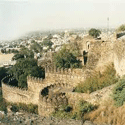 Jhansi Fort
Jhansi Fort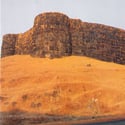 Suvarnadurg Fort
Suvarnadurg Fort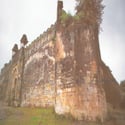 Pauni and Nagardhan Fort
Pauni and Nagardhan Fort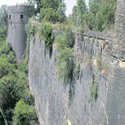 Ahmadnagar Fort
Ahmadnagar Fort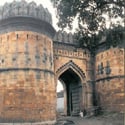 Narnala, Akola and Achalpur Forts
Narnala, Akola and Achalpur Forts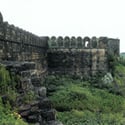 Ballalpur, Chandrapur and Manikgarh Forts
Ballalpur, Chandrapur and Manikgarh Forts